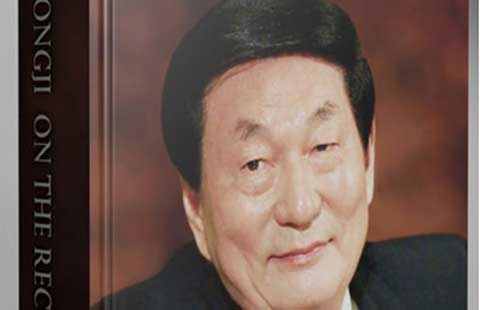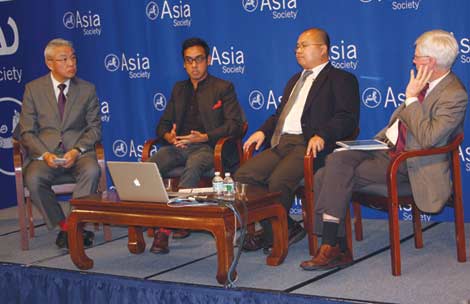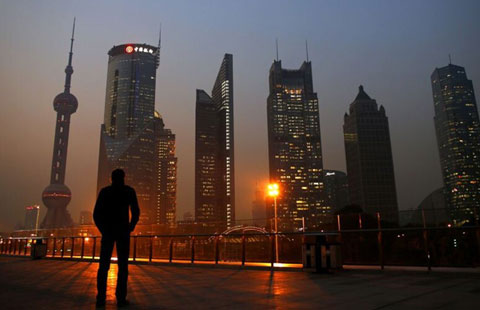Despite progress, the issue of race still haunts US society
Updated: 2014-08-18 11:01
By Chen Weihua(China Daily USA)
|
||||||||

On Aug 8, 1963, Chinese leader Mao Zedong, asked by American civil rights leader and revolutionary Robert F. Williams, made a declaration in support of African Americans' just struggle against racial discrimination.
Williams and his wife Mabel later went to China in exile to escape the US government pursuit for so-called "kidnapping" charges.
Mao wrote his second declaration in support of African Americans struggle on Apr 16, 1968, 12 days after civil rights leader Martin Luther King Jr. was assassinated in Memphis, Tennessee.
And in 10 days' time, Americans will mark the March on Washington for Jobs and Freedom held on Aug 28, 1963. The "I have a dream" speech by King is not just known among Americans, but hundreds of millions of Chinese.
While all these seem to be history of half a century ago, what has been happening in Ferguson, Missouri, in the past more than a week again reminds people that racial issue has far from being settled in the United States, despite the introduction of Civil Rights Act 50 years ago in July 1964 and the fact that Barack Obama has been the first African American president since 2009.
This was clearly demonstrated in the fatal shooting of 18-year-old African American Michael Brown by a local police officer, the subsequent riots, teargas, curfew, heavy-handed police and nationwide protests, just as the protests erupted after the fatal shooting of 17-year-old African American high school student Trayvon Martin in Sanford, Florida, in February last year, by a neighborhood watch coordinator.
A Pew Center survey released in June this year showed that the American public is evenly divided about whether the "greatest nation on earth" has made the changes needed to give African Americans equal rights with whites. About half (49 percent) say the US has made the necessary changes, while 46 percent believe the US needs to continue making changes.
It's often shocking for foreign visitors to walk into a community or a public school in the US and feel that racial segregation, which is illegal, still exists somehow in reality.
While the Brown vs Board of Education decision made by the US Supreme Court 60 years ago ruled that racial segregation in public schools violated the Constitution, another Pew Center report in May this year, analyzing data from the US Department of Education, showed that about one-in-three black and Hispanic students attend a school where at least three quarters of students were of the same race or ethnicity.
For Latino students, segregation has grown most in the western US. In 2011, some 45 percent of Latinos in the western part of the US attended schools where at least nine-in-ten students were minorities, up from 29 percent in 1991.
For African Americans, students in the south attend less segregated schools than those in the northeast part of the US, though segregation in the south has increased in recent decades, the Pew Center quoted a report from the Civil Rights Project at the University of California, Los Angeles.
The Martin Luther King Memorial along the Tidal Basin in Washington, with its sculpture made by Chinese artist Lei Yixin, is a popular destination for people to pay tribute to the civil rights leader and reflect on the progress of their society.
However, a Pew Center survey last August shows that African Americans are much more downbeat than whites about the pace of progress toward a color-blind society.
African Americans are more likely to say that they are treated less fairly than whites by police, the courts, public schools and other key community institutions.
For example, 70 percent of African Americans and about a third (37 percent) of whites say African Americans are treated less fairly in their dealings with the police. And about two-thirds (68 percent) of African American respondents and a quarter of whites (27 percent) say African Americans are not treated as fairly as whites in the courts.
The study finds that the economic gulf between African Americans and whites that was present 50 years ago largely remains. And when it comes to household income and household wealth, the gaps between African Americans and whites have actually widened. On other measures such as poverty and homeownership rates, the gaps are roughly the same as they were 40 years ago.
The 2013 US Human Rights Records released by China's State Information Office on February 28 this year, just a day after the US State Department's announcement of a report on China's human rights, listed racial discrimination as one of the top concerns for the world's only superpower.
It seems that even today, Mao's words half a century ago are not totally irrelevant. The US also needs to clean its own hands before pointing accusing fingers at others.
Contact the writer at chenweihua@chinadailyusa.com
(China Daily USA 08/18/2014 page2)
- Xinjiang publishes anti-terror brochures
- Security pact sealed with Afghanistan
- President Xi encourages international cultural exchanges
- Premier Li: China willing to help Afghan infrastructure
- Chinese FM: China, Asia-Pacific become community of shared destiny
- Foreign minister remarks on possibility of China-Japan summit
Most Viewed
Editor's Picks

|

|

|

|

|

|
Today's Top News
VW defends safety of recalled New Sagitar
Former premier makes Hurun philanthropists list
Xinjiang publishes anti-terror brochures
SOHO endows $10m to Yale
Cook and Ma talk about partnership
Language a barrier to healthcare for Asian Americans
China businesses need innovation: VC
Security pact sealed with Afghanistan
US Weekly

|

|















